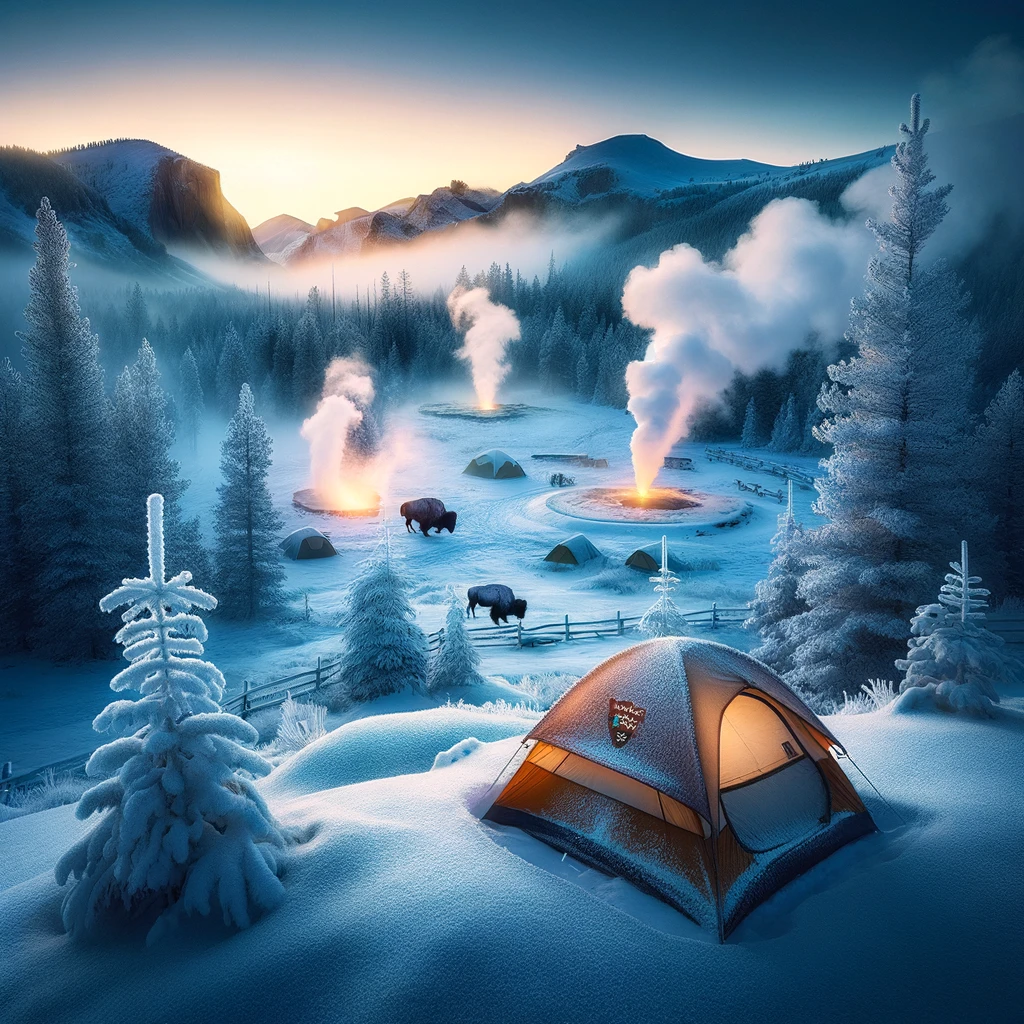Winter camping offers a unique opportunity to witness nature in its raw, pristine state. A new world of winter wildlife watching opportunities emerges as the landscape transforms under a blanket of snow. This comprehensive guide will help you make the most of your winter camping adventure, focusing on the incredible wildlife that remains active during the colder months.
Preparing for Winter Wildlife Watching
Before embarking on your winter wildlife watching expedition, being well-prepared is crucial. The right gear can make the difference between a memorable experience and a miserable one.
Essential gear for winter wildlife watching includes high-quality binoculars or a spotting scope for distant viewing. These tools allow you to observe animals without disturbing them. Equally important is appropriate cold weather clothing. Layering is essential, with a moisture-wicking base layer, an insulating mid-layer, and a waterproof outer layer. Remember warm, waterproof boots, gloves, and a hat to prevent heat loss.
For those interested in capturing their wildlife encounters, winter camping photography requires some special considerations. Adjust your camera settings for snowy conditions, which can trick your camera’s light meter. Increase exposure compensation to prevent underexposed shots. Remember to practice ethical wildlife photography by maintaining a safe distance and never baiting animals for a better shot.
Best Locations for Winter Wildlife Watching
Northern Forests
The vast northern forests of Alaska and northern states offer excellent opportunities to spot wolves, moose, and caribou. These animals are more visible against the snowy backdrop, and their dark coats stand out starkly. Look for areas with recent wolf activity or moose browsing signs on willows and aspens.
Coastal Areas
Coastal regions provide fantastic opportunities for migratory bird watching. Many species of ducks, geese, and shorebirds overwinter in these areas. Marine mammals like seals and sea lions are also more visible as they haul out on beaches or ice floes.
Mountain Regions
Alpine environments host unique wildlife adapted to harsh winter conditions. Bighorn sheep and mountain goats are often visible on steep, rocky slopes where the wind has blown the snow clear. Remember that high-altitude wildlife viewing requires extra safety precautions due to potentially extreme weather conditions.
Tracking and Identifying Winter Wildlife
One of the joys of winter wildlife watching is the ability to read the story of animal movements in the snow. Fresh tracks can lead you to active areas where animals are feeding or bedding down. Learn to identify common tracks and look for other signs of wildlife presence, such as scat, bark scrapes on trees, or tufts of fur caught on branches.
Nocturnal Wildlife Watching Techniques
Many animals are more active at night during winter to conserve energy during the colder daylight hours. Using night vision equipment responsibly can open up a new world of wildlife observation. Owls, in particular, are fascinating to watch as they hunt in the quiet of a winter night. Always use red-filtered lights to minimize disturbance to nocturnal creatures.
Rare Winter Wildlife Encounters
Snowy Owls
These majestic Arctic visitors sometimes venture south during winter, creating excitement among birdwatchers. Look for them in open fields or along coastlines where they hunt for small mammals. Remember to keep a respectful distance and avoid approaching too closely, as these birds may be stressed from their long journey.
Winter Weasels (Ermine)
The ermine, or short-tailed weasel, undergoes a remarkable transformation in winter, changing from brown to pure white with a black-tipped tail. These agile predators are a delight to watch as they bound through the snow, searching for prey. Look for them in areas with good cover and abundant small rodents.
Wildlife Behavior in Winter
Understanding how animals adapt to winter conditions enhances the wildlife watching experience. Many species enter a state of torpor or full hibernation, while others remain active but employ energy-saving strategies. Observing these behaviors offers insights into the remarkable resilience of wildlife in harsh conditions.
Conservation and Ethical Viewing Practices
Always maintain a safe distance, avoid approaching wildlife, and never feed wild animals. Support conservation efforts by participating in citizen science projects or donating to wildlife organizations.
Winter Camping Safety While Wildlife Watching
While watching wildlife, we must remember that we are visitors in their habitat. Be aware of your surroundings, especially in areas with large predators like bears or mountain lions. Carry bear spray if appropriate for your location, and know how to use it. When venturing into remote areas, always let someone know your plans and expected return time.
To ensure you stay safe and comfortable during your winter camping trip, check out our guide on how to make winter camping comfortable. It covers essential tips for staying warm and cozy in cold conditions.
Conclusion
Winter wildlife watching during camping trips offers a unique and rewarding experience. The quiet solitude of snow-covered landscapes provides an intimate glimpse into the lives of animals adapted to survive in harsh conditions. By preparing adequately, practicing ethical viewing techniques, and respecting the natural world, you can create lasting memories and develop a deeper appreciation for the wonders of winter wildlife.

Leave a Reply